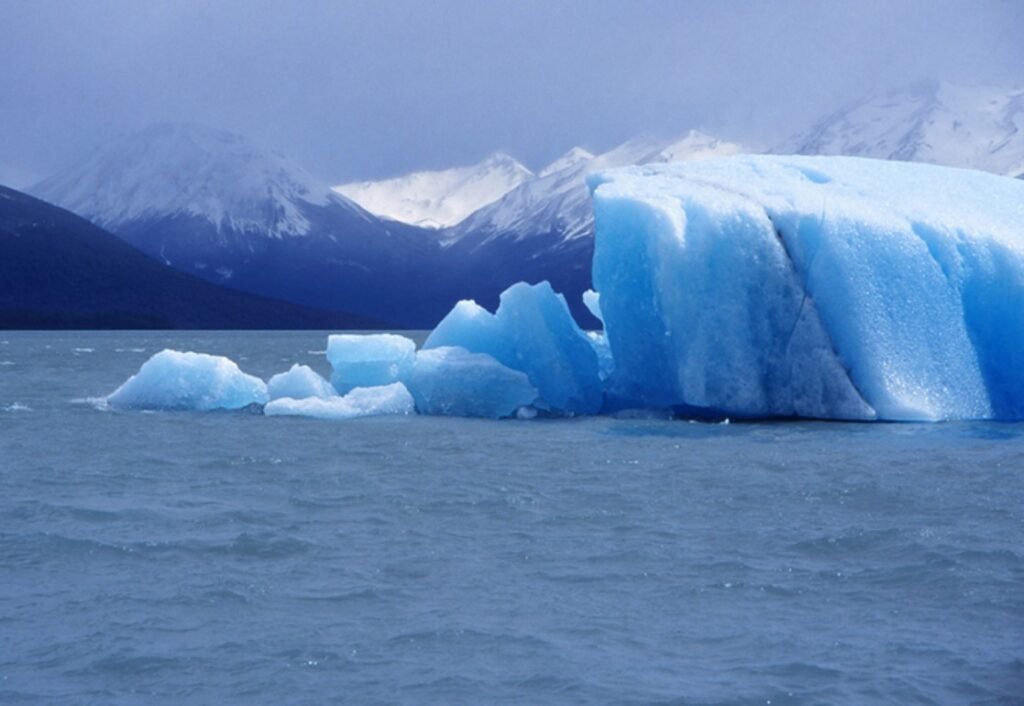The world’s biggest iceberg, known as A23a, has finally moved out of the Antarctic waters after being stuck there for 37 years. The massive chunk of ice, measuring about 74 km by 63 km, split from the Filchner Ice Shelf in 1986 and remained grounded in the Weddell Sea for decades. Now, satellite images show that it has drifted northwards into the South Atlantic Ocean, where it could pose a threat to shipping and wildlife.
A23a: A Giant Among Icebergs
A23a is one of the largest icebergs ever recorded, with an area of more than 4,000 square kilometers, equivalent to the size of Cyprus or Delaware. It is also one of the oldest, having survived for nearly four decades in the frigid Antarctic waters. Most icebergs break into smaller pieces or melt within a few years of calving from the ice shelves.
A23a owes its longevity to its location and shape. It was grounded on the sea floor, which prevented it from drifting away or being influenced by ocean currents and winds. It also had a flat and rectangular shape, which made it more stable and resistant to cracking. However, in recent months, A23a started to move and rotate, indicating that it had become free from its anchorage.
A New Journey for A23a
According to the British Antarctic Survey (BAS), A23a is now heading towards the gap between the British overseas territories of the Falklands and South Georgia. It is currently about 1,000 kilometers away from the latter, which is home to millions of penguins, seals, and seabirds. The BAS is monitoring the iceberg’s movement and potential impact on the environment and navigation.

A23a could follow one of two possible scenarios, depending on the ocean currents and winds. It could either move east towards South Georgia and get stuck in the shallow waters of its continental shelf, or it could head for the nearby islets known as Shag Rocks. In either case, A23a could disrupt the local ecosystem by blocking the access of marine animals to their feeding and breeding grounds. It could also pose a hazard to ships that operate in the area, especially fishing vessels.
Alternatively, A23a could continue to drift northwards and eventually reach warmer waters, where it would start to melt and break apart. This would inject a large amount of fresh water into the sea, which could affect the salinity and temperature of the ocean. It would also release mineral dust from the glacier, which could stimulate the growth of phytoplankton and other organisms.
A Record-Breaking Iceberg
A23a is not the first iceberg to make headlines for its size and journey. In May 2021, another giant iceberg, called A76, broke off from the Ronne Ice Shelf and became the largest floating iceberg on the planet. It measured about 3,200 square kilometers, almost twice the size of A23a. However, it soon fragmented into three pieces, one of which, A76a, is still the second-largest iceberg in the world.
The largest iceberg ever observed was B15, which calved from the Ross Ice Shelf in March 2000. It had an area of about 11,000 square kilometers, comparable to the size of Jamaica or Connecticut. It broke into several smaller icebergs over the years, some of which reached as far as New Zealand.
The record for the largest iceberg in history, however, belongs to an unnamed iceberg that was sighted by the USS Glacier in November 1956. It was estimated to be 335 km long and 97 km wide, with an area of more than 31,000 square kilometers, larger than Belgium. It was located 240 km west of Scott Island, in the Southern Ocean.
A Sign of Climate Change?
The calving of large icebergs from the Antarctic ice shelves is a natural process that occurs periodically. However, some scientists have suggested that the frequency and magnitude of these events could be influenced by climate change, which is causing the warming of the ocean and the atmosphere. This could weaken the ice shelves and make them more prone to cracking and collapsing.
The Antarctic ice shelves act as buttresses that slow down the flow of the glaciers behind them. If they lose mass or collapse, the glaciers could accelerate their movement towards the sea, raising the global sea level. According to a recent study, the Antarctic ice sheet lost about 2.5 trillion tons of ice between 1994 and 2017, contributing to about 7.6 mm of sea level rise.
The fate of A23a and other large icebergs could also have implications for the global climate system. The Antarctic Circumpolar Current, which flows around the continent, is a major driver of the ocean circulation and the distribution of heat and nutrients. The presence of large icebergs could alter the dynamics of this current and affect the climate of the Southern Hemisphere and beyond.
